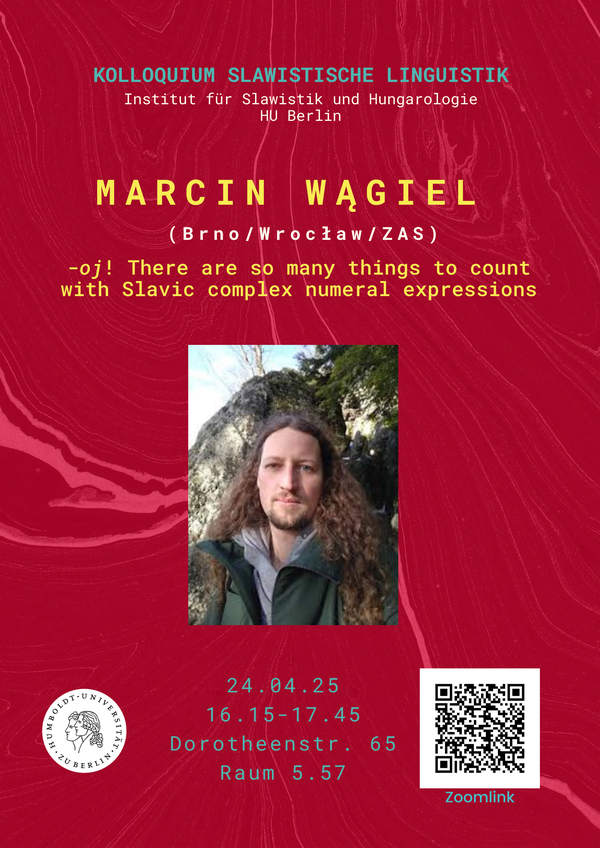Vortrag Marcin Wągiel (Kolloquium Slawistische Linguistik)
- https://www.slawistik.hu-berlin.de/de/veranstaltungen/slawling/wagiel25
- Vortrag Marcin Wągiel (Kolloquium Slawistische Linguistik)
- 2025-04-24T16:15:00+02:00
- 2025-04-24T17:45:00+02:00
- Wann 24.04.2025 von 16:15 bis 17:45
- Wo DOR65, Raum 5.57 & zoom
- Name des Kontakts Berit Gehrke
- Web Externe Webseite besuchen
-
iCal
24.04. Marcin Wągiel (Brno / Wrocław / ZAS): -oj! There are so many things to count with Slavic complex numerals
In this talk, I will investigate the meaning and structure of basic numerals such as tř-i (`three') and derivationally complex numerical expressions in Czech (e.g., Dočekal 2012, Caha 2013, 2017, Dočekal & Wągiel 2018, Wągiel 2020, 2023, Grimm & Dočekal 2021). The latter share the numerical root with the corresponding basic numeral, but also involve additional morphology, e.g., tr-oj-ic-e (`group of three'), tr-oj-í (`three kinds of'), tr-oj-e (`three collections of'), tr-oj-it-ý (`triple') and tr-oj-násobn-ý (`three-time'). The core idea is that (i) even simplex numerals such as tř-i (`three') are in fact complex syntactico-semantic objects involving reference to numbers and even more primitive abstract components of meaning (Wągiel & Caha 2020, 2021), (ii) it is possible to have a unified compositional mechanism that allows us to derive different kinds of part-whole structures and (iii) the compositional nature of numerical expressions is reflected in their complex morphological form in a systematic fashion. The analysis will propose a system that combines standard compositional semantics utilizing various measure functions (e.g., Krifka 1989) with the nanosyntactic model of spellout (e.g., Starke 2009, Caha 2009) in order to capture meaning-form correspondences attested in Czech numerical expressions. It will explain the function of the affix -oj in complex numerical expressions.

